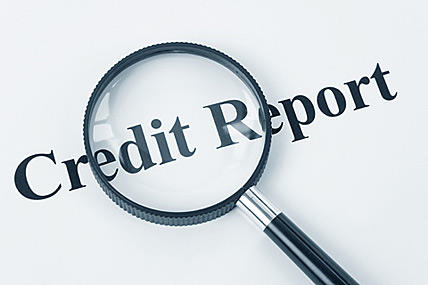More and more, people are being told how important it is to "protect your credit score," "improve your credit score," and "find out your credit score for free!" — and by all accounts this growing chorus is making the average person more keenly interested in their credit score and how it works than ever before.
There's just one problem with this new focus on the almighty credit score: in reality, we don't have just one credit score. On the contrary, each of us actually has over 40 different credit scores!
Wait… what? It does seem hard to believe, which is why this misconception is so prevalent. Most likely the general confusion can be attributed to the fact that when credit scores are discussed in TV commercials or other forms of media they are almost always referred to in the singular sense. It's hard to know why that is, but unfortunately it's not accurate.
The truth is that so many scores (and potential scores) exist for each one of us because banks and other lenders want to use several different lenses to evaluate our ability to manage credit. As you'll see below, these financial institutions use various scores from credit bureaus for different types of credit applications (for mortgages,credit cards, etc.) and sometimes even combine existing data to create their own scores.
So what are the different types of scores and how can you use this more nuanced understanding of credit to your advantage? Let's explore…
How many scores does each person have?
Depending on how you count the scores, there are anywhere from 30 to several hundred credit scores for each one of us. And while the three major credit rating agencies (Experian, Equifax, andTransUnion), also known as credit bureaus, are the main repository for credit information, they are not the only key players in the industry.
Lots of scores means lots of models. Each of the major credit bureaus creates scores for different purposes using these different models. Free credit score providers, for example, often offer an educational score from a specific bureau and these scores aren't ever used by lenders – but they can still be used as a barometer for your overall creditworthiness.
To better understand how this all works, you should know that there are two primary credit scoring models that are most popular with lenders:
FICO (from the Fair Isaac Corporation)
The oldest model, established in 1956 and updated many times since, was created by FICO. They are a company whose primary business is selling its proprietary scoring system to lenders and credit bureaus, which they in turn use to evaluate lending risk. The original scores were used to calculate the likelihood that someone would default on a mortgage. Over the last few decades, the scores have evolved to apply to many different types of credit products.
If you're curious about the underlying calculations that determine how your FICO scores are calculated, you can see FICO's own explanation of the factors that affect your scores here.
The FICO model now applies to many types of credit scores. The different types of FICO scores have been described as follows:
– The Generic FICO Score
– The FICO Mortgage Score
– The FICO Auto Score
– The FICO Bankcard Score
– The FICO Installment Loan Score
– The FICO Personal Finance Score
So each of us has at least 6 different FICO scores! Yet even this breakdown doesn't quite capture all the scores that are derived from the FICO scoring model. In truth, there are many different ones that FICO provides to each of the credit bureaus. For example, here are a few of the scores used by each bureau:
Equifax: The Pinnacle Score and Beacon Score (with distinct variations for mortgage, auto, bankcard, and installment loans)
Experian: The Experian Risk Score (with distinct variations for mortgage, auto, bankcard, and installment loans)
TransUnion: The TransUnion Risk Score (with distinct variations for mortgage, auto, bankcard, and installment loans)
That means each of us has at least 16 separate credit scores based on the FICO model. As you can see, even with just FICO, the number of credit scores for any given individual can make things confusing. One key thing to note is that each credit bureau has a separate score (or two) that they give to auto lenders when you apply for a loan, another one that's given to mortgage lenders, and yet another one that's given to banks when you apply for a credit card or loan. They also have a score that can be sold to consumers.
That's a lot of scores, right? And we're not done yet.
VantageScore (from the three credit bureaus)
The other major credit scoring model, called the VantageScore, was launched more recently, in 2006. It's a collaboration between the big three credit bureaus that enables them to compete with the FICO model. Although the credit bureaus still continue to work closely with FICO, they realized that they had an opportunity to sell their own credit scoring model to lenders and therefore decided to create the VantageScore model.
Like the FICO model, the VantageScore model can produce credit scores for lenders and for consumers. You can see all the factors that influence your VantageScore here.
The newest version of this model, called VantageScore 3.0, allows for people who previously did not have enough financial information to receive credit scores to get them now (by using a broader array of factors in the model). It also uses "reason codes" to explain to consumer why they have a high or low score. There are a number of ways to see your VantageScore 3.0, including with ReadyForZero.
While the VantageScore was created jointly by the three credit bureaus, each credit bureau may have a slightly different score for you than the others. That's because the VantageScore model, like the FICO scoring model, uses information from your credit report to calculate your score. And there are occasionally discrepancies in the credit reports from one credit rating agency to another. For example, if one of your credit card accounts that you've always paid in full was for some reason missing from your Equifax credit report but was present on your TransUnion report, then your Equifax credit score would look lower than your TransUnion score, even if both scores were from the VantageScore model.
With that in mind, it's clear that even with the VantageScore model alone, you have many different credit scores:
Equifax: VantageScore (used for mortgage, auto, bankcard, and installment loans)
Experian: VantageScore (used for mortgage, auto, bankcard, and installment loans)
TransUnion: VantageScore (used for mortgage, auto, bankcard, and installment loans)
It's a little overwhelming, huh?
So let's see.. if you count both of the two scoring models, the three different credit bureaus, and the specific credit scores for each type of lender, then we're up to more than 20 different credit scores per person — and more than 30 or 40 if you include the direct-to-consumer scores and other variations.
How do you know what is a good credit score?
You may be wondering: with all these credit scores, how can you tell whether your score is any good?
Fortunately, it's not quite as complicated as one might expect. After the resolution of a lawsuit in which VantageScore won the right to use the same number range as FICO, both models are now based on a spectrum of 300-850, with higher scores being better.
In general, experts say the breakdown of scores is something like this:
760-850: Excellent
700-759: Very Good
660-699: Good
620-659: Fair
619 or less: Bad
Of course, this is subjective and each lender or financial institution will have their own way of judging your particular score.
Whether you're applying for a mortgage, an auto loan, a credit card, or some other type of credit, the score will depend on the factors that particular lender has identified as being important indicators of creditworthiness in the context of their products. Given that each lender can tweak the models to work best for their purposes, your total number of credit scores is just about unlimited.
If you want to see how much your credit scores can affect a potential mortgage payment or other type of loan, you can try using this calculator on the FICO website.
How can you "check your credit score" if there are so many credit scores?
There are a lot of sites where you can get a "free credit score" or even pay a fee to find out your credit score. But if there are many different credit scores, how do you know that getting a free or paid score on one of these sites is worthwhile?
The answer is: checking your credit score can still be helpful, especially because in most cases your credit scores are aligned with each other. It's rare to have one score be terrible and another score be great — unless there's an error on one of your credit reports, in which case you need to take action to fix it!
Before checking your score on one of these sites, you can find out which credit score they will give you. For example, if it's a score from Experian.com, you may get an Experian Risk Score or an Experian VantageScore. If you're on another site, read their information to find out which credit bureau and which score they use.
While the exact score you receive may not be the final word on your financial health, it's still a good barometer of how well you're doing managing your credit and it can help you identify ways to improve your behavior (or spot fraud).
How can you "improve your credit score" if there are so many credit scores?
As mentioned above, the good news is that all your credit scores will usually trend in the same direction. So there are certain actions you can take to improve all your credit scores. A few of the most basic actions you can take to accomplish this include:
1. Always pay in full; always pay on time — the worst thing for your credit score is to have any unpaid accounts or late payments of 30 days or more listed on your credit report. If you currently have an unpaid balance listed that has not been dealt with via bankruptcy and is still recent enough that it's within the statute of limitations, see if you can call up the lender and reach an agreement to pay it off or even pay a fraction of it to get it wiped off the books. By the same token, make sure to pay all bills and statements on time, but especially avoid making any payments later than 30 days after the due date.
2. Increase your credit limit, if you can handle it — one of the major factors in your credit scores is the ratio of your available credit that you're using. For example, if you have three credit cards with a credit limit of $10,000 on each one, then your total available credit is $30,000. Now let's say you're carrying balances of $5,000 on each card, then you're using $15,000 of your $30,000 available credit and your credit utilization ratio would be 50%. In general, you want this number to be lower than 30% to optimize your credit scores.
3. Pay off balances, don't carry revolving debt if you can avoid it— the best strategy long-term is to pay off all credit card balances and to stay on track with any installment loans you have (student loans, mortgages, car loans, etc.). The reason it's so important to pay off credit card debt is that these balances can endanger your credit score (and your finances) over time. If you become burdened by debt, there's a greater likelihood of missing payments and/or seeing your credit utilization ratio creep closer to 100%.
Remember that there are no "magic" solutions when it comes to increasing your credit score. Beware of any products or services that promise unrealistic results or quick fixes. The best way to approach this is to get in control of your finances and automate your payments as much as possible. If you have debt, learn how to pay off your debt efficiently. And consider using tools like ReadyForZero to automate your payments so you won't miss any.
Conclusion
Ultimately, the fact that you have many different credit scores is a good thing. It means that a wide range of lenders can work with you to offer different types of credit to help you reach goals like buying a house. But it's much more important now to understand exactly how credit scoring works and how your many credit scores can make a difference in your life. Hopefully by using the information above you'll be able to get exactly what you need from your big, happy "family" of credit scores and avoid any unpleasant credit experiences.













